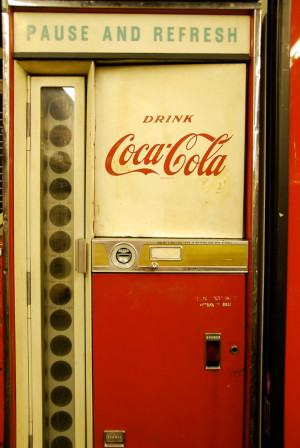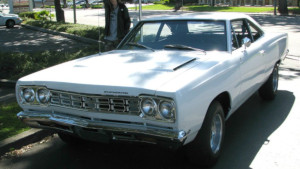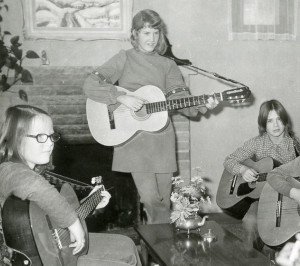
What did teens buy in the 60s - USA

Image: public domain via menloparkplanning
Teenagers in the United States had more money and more freedom than any previous generation.
The teen market was huge. Manufacturers of all types of products wanted to get into it. By 1966 this market was worth $15 billion. [1]
At the start of the decade manufacturers and retailers found that television advertising was effective at luring in teenage buyers and starting new trends.
An anti-consumer movement developed in that latter half of the decade. Teenage spending did not go down, but teenagers, particularly college students, were harder to reach. Television advertising was less effective. Marketers instead placed adverts in college magazines and with college radio stations.
The music industry, however, had no difficulty in persuading teens to part with their hard-earned or easy-to-come-by dollars.
Average income
In 1962 the average teen income was $500. It wasn't split evenly between the sexes. Boys got $778 and girls $392.
How did they spend it?
Music and fashion were not top of the list. Boys and girls spent more on food than they did on clothes or records. Music came second for boys and clothing and jewellery came second for girls.
In 1962 teenage spending in different categories was:
| Boys | |
|---|---|
| Food | 32% |
| Records | 22% |
| Sports | 11% |
| Clothing and jewellery | 7% |
| Grooming | 2% |
| Savings | 7% |
| Girls | |
|---|---|
| Food | 26% |
| Clothing and jewellery | 19% |
| Records | 11% |
| Savings | 9% |
| Grooming | 7% |
| Sports | 6% |
Source: 'Year by Year in the Rock Era' by Herb Hendler, published by Greenwood Press in 1982, page 59.
In 1966 teenage boys bought 40% of sportswear sold in the US and teenage girls 33% of all cosmetics.[2]
Food
Fast food was popular with teenagers. Drive-in hamburger stores and drive-in movies were frequented by teens who owned cars.
Vending machines

Coin-operated vending machines were popular in the 1960s. In 1964 people fed an average of 83 million coins into vending machines every 24 hours. They spent a total of $3.5 billion per year on the machines. [3]
Machines sold anything from bubble-gum to cheap jewellery. In low-income areas, a pair of cufflinks for a quarter(25c) was a big seller in 1967, although the buyers were more often adults rather than teens.
There were coin-op vending machines which took 1c, 5c, 10c, 25c or 50c.
Teenagers were not easily fooled with knockoffs. They wanted genuine fashion items.
Popular items included TV merchandise, such as Batman-related products. Batman was first shown on TV between 1966 and 1968.
Girls also bought jewellery out of the machines. Go-Go rings, which were plastic rings costing 10c, were popular. Other crazes included decals to decorate fingernails, toes and elbows.
Badges were another popular item. When the Beatles conquered the US in 1964 there was a craze for Beatle buttons. Another favourite was a black eye patch with weird designs.
Operators put machines in locations with plenty of passing trade, such as chain and dime stores, supermarkets, turnpike shops, YMCA and teen hangouts, such as soda shops and record stores.
Source: 'Tapping the Teen Market' published in Billboard magazine, August 20, 1966, page 73.
Cars

In 1960s America teenagers from affluent homes were car owners. In 1964 one third of 15-24-year-old boys owned used cars. Teenagers owned 20% of American cars and seven million teens had driving licences.
In 1967, teenagers were the main customers of aftermarket 4-track and 8-track tape players for automobiles.
In 1968 Chrysler launched a new 2-door range aimed at younger buyers. The Plymouth Road Runner, after the well-known cartoon character, had a no-frills, vinyl-trimmed interior. It was all about performance at a price. Engines ranged from a 145 hp 6 cylinder to a 325 hp V8. It was styled to look like a hot-rod straight out the factory. The basic price was $2,600, but 'hot-rod' options could increase the cost to $4,000. [4]
Records
With boys spending more than 20% of their income on records and girls more than 10%, music was a huge teenage market in the 1960s.
US teenagers bought both albums and singles. In 1960 a single cost 98c and an LP $3.98. Stereo became popular in the 60s. Stereo LPs were dearer, $4.98 in 1962. [5]
The music itself changed enormously between 1960 and 1969. What remained of the Rock'n'roll era was still in the charts in the 1960s, but by 1969 it was the beginning of prog rock (progressive rock).
Radios
The first transistor radios appeared in the 1950s. By the 1960s they were cheap enough for every teenager to have one.
Teenagers wanted was small and cheap radios. They opted for far-eastern imports or American branded radios made in Hong Kong or Japan. By 1966 a pocket-sized AM portable cost less than $10.
More discerning older buyers went for miniature AM/FM portables which cost between $20 and $30.
In 1966 there were 240 million radios in the US. In 1948 there were just 74 million. In 1966 alone 47 million radio sets were sold.
The popularity of spy films and TV programmes saw a teenage boom in shortwave radio receivers towards the end of the 1960s.
As well as radios, teenagers bought more expensive electronics. In 1966 17% of teenagers had their own television sets and 18% had their own tape recorders.[2]

Image: public domain via menloparkplanning
Musical instruments
As well as listening to music, teens wanted to make music themselves. Sales of musical instruments boomed in the 1960s. Guitars were particularly popular. In 1964 85% of guitars sold were bought by teenagers.
Fashion
Fashion was a huge area of expenditure for teens. In 1961, 15-24-year-old girls spent $5 billion on clothes, that's $439 each.
Boys too spent on fashion, but not as much as girls. Male grooming products were also popular with teen boys in the 1960s.
Cameras
By 1966 68% of teenagers owned cameras.[2] Popular models included the Kodak Instamatic and the Polaroid Swinger 20.
Smoking
Despite growing evidence about the health risks, over half of teenage boys smoked in the 1960s. In 1966 53% 16-19-year-olds smoked. The habit was also penetrating younger age groups with 25% of the 13-15-year-old age group smoking.
Source: 'Year by Year in the Rock Era' by Herb Hendler, published by Greenwood Press in 1982, page 59
Read more:
References
[1] 'Nation's 24 million teenagers make money talk' published in the New York Times, January 17, 1966, page 42
[2] 'Wooing the dimply, pimply' published in the New York Times, June 5, 1966, page 291
[3] 'Year by Year in the Rock Era' by Herb Hendler, published by Greenwood Press in 1982, page 72
[4] 'Chrysler accents appeal to youth' published in the New York Times, September 1, 1966, page 16
[5] 'Year by Year in the Rock Era' by Herb Hendler, published by Greenwood Press in 1982, page 57
By Steven Braggs, June 2023


Comments